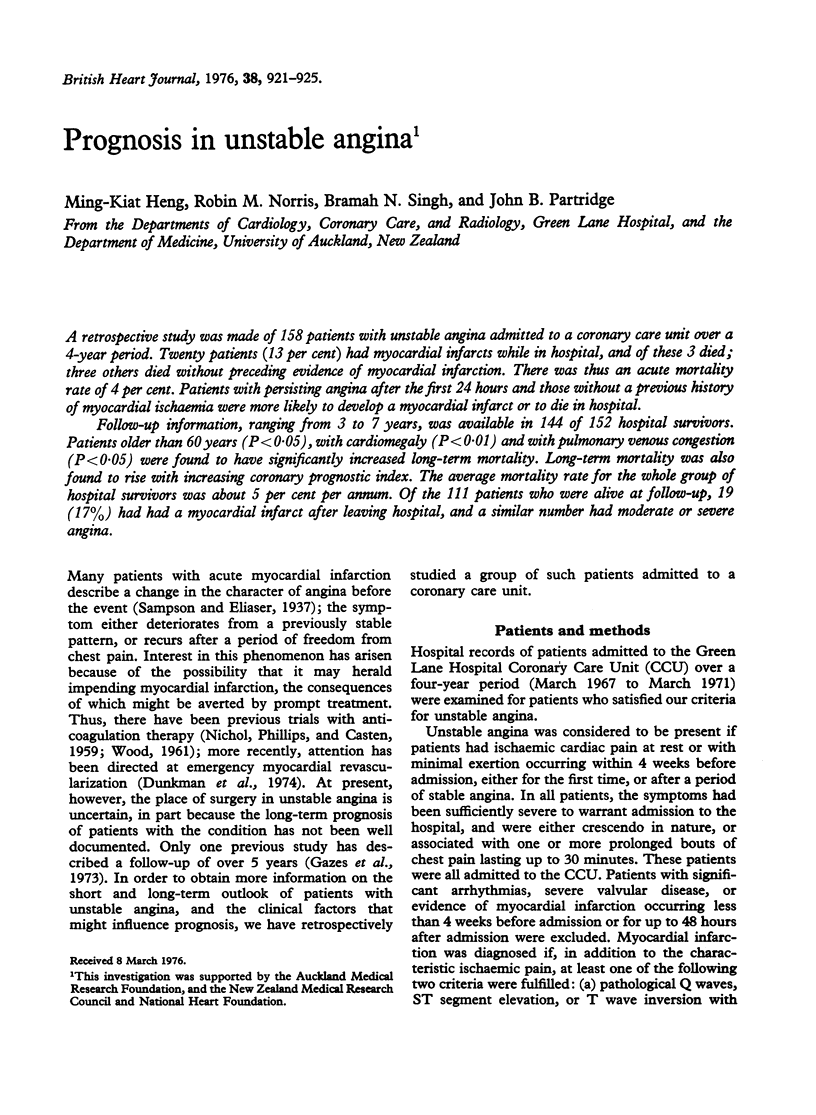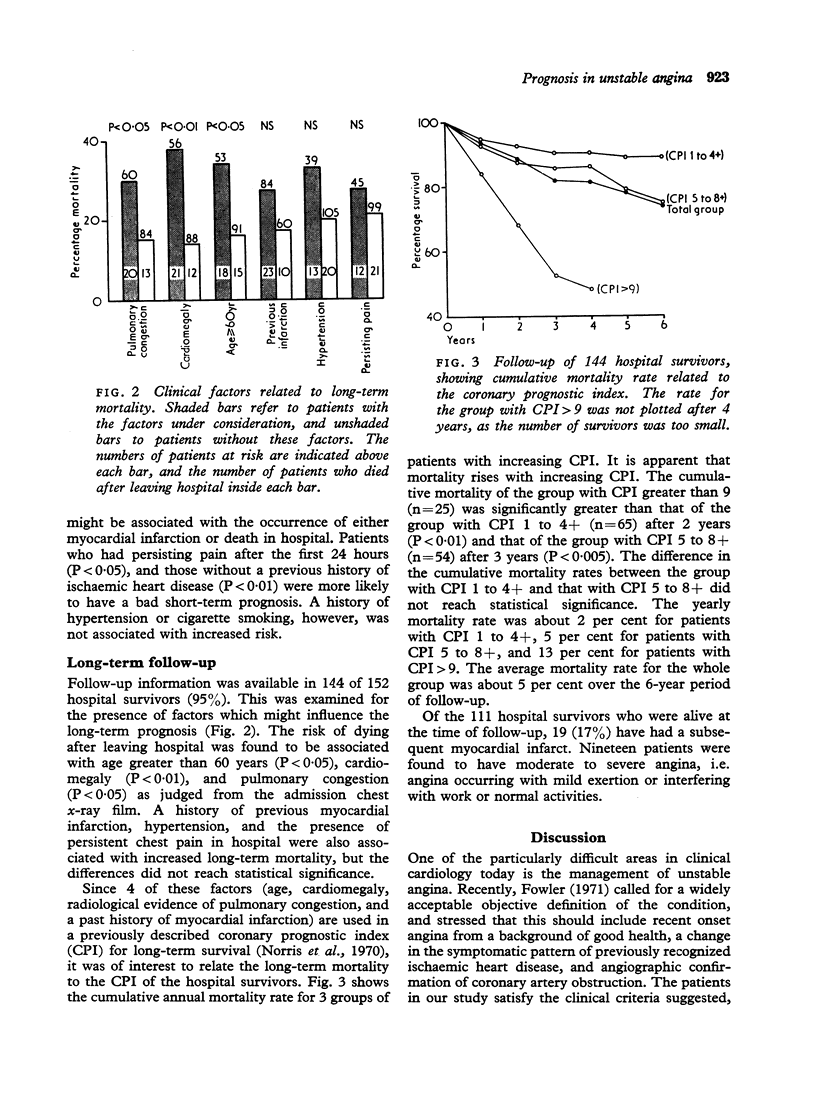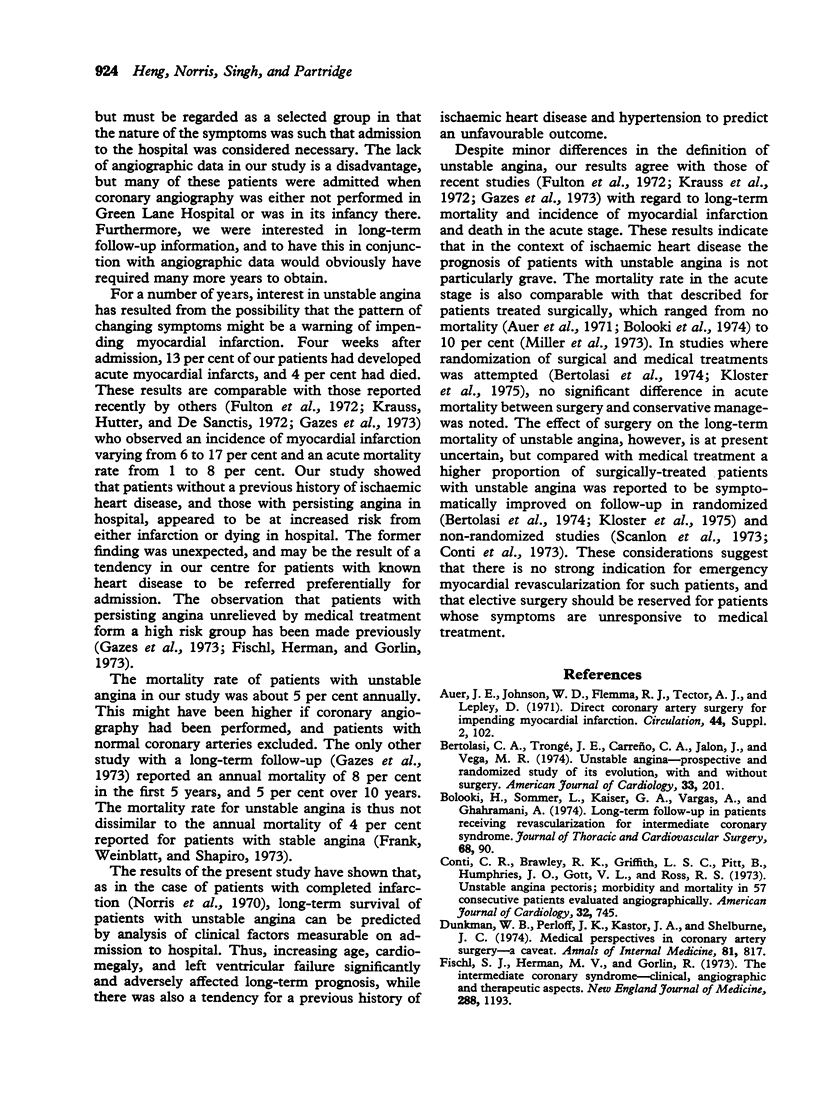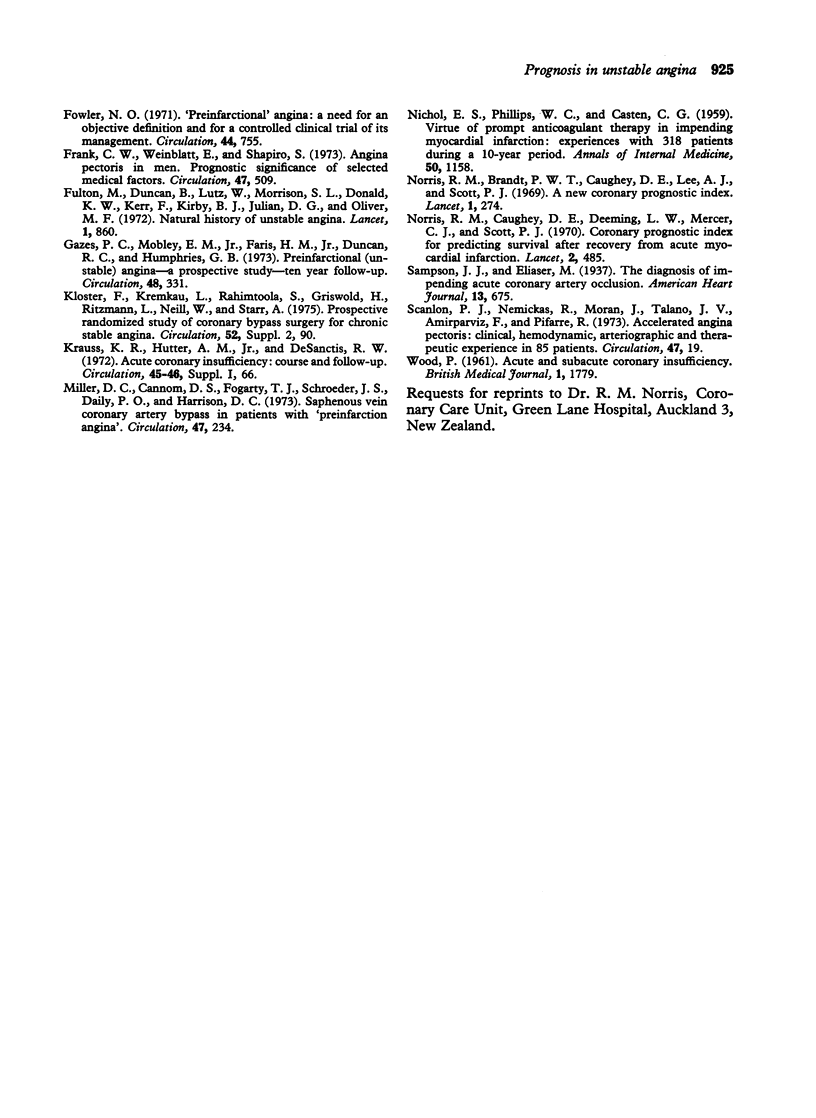Abstract
A retrospective study was made of 158 patients with unstable angina admitted to a coronary care unit over a 4-year period. Twenty patients (13 per cent) had myocardial infarcts while in hospital, and of these 3 died; three others died without preceding evidence of myocardial infarction. There was thus an acute mortality rate of 4 per cent. Patients with persisting angina after the first 24 hours and those without a previous history of myocardial ischaemia were more likely to develop a myocardial infarct or to die in hospital. Follow-up information, ranging from 3 to 7 years, was available in 144 of 152 hospital survivors. Patients older than 60 years (P less than 0-05), with cardiomegaly (P less than 0-01) and with pulmonary venous congestion (P less than 0-05) were found to have significantly increased long-term mortality. Long-term mortality was also found to rise with increasing coronary prognostic index. The average mortality rate for the whole group of hospital survivors was about 5 per cent per annum. Of the 111 patients who were alive at follow-up, 19 (17%) had had a myocardial infarct after leaving hospital, and a similar number had moderate or severe angina.
Full text
PDF






